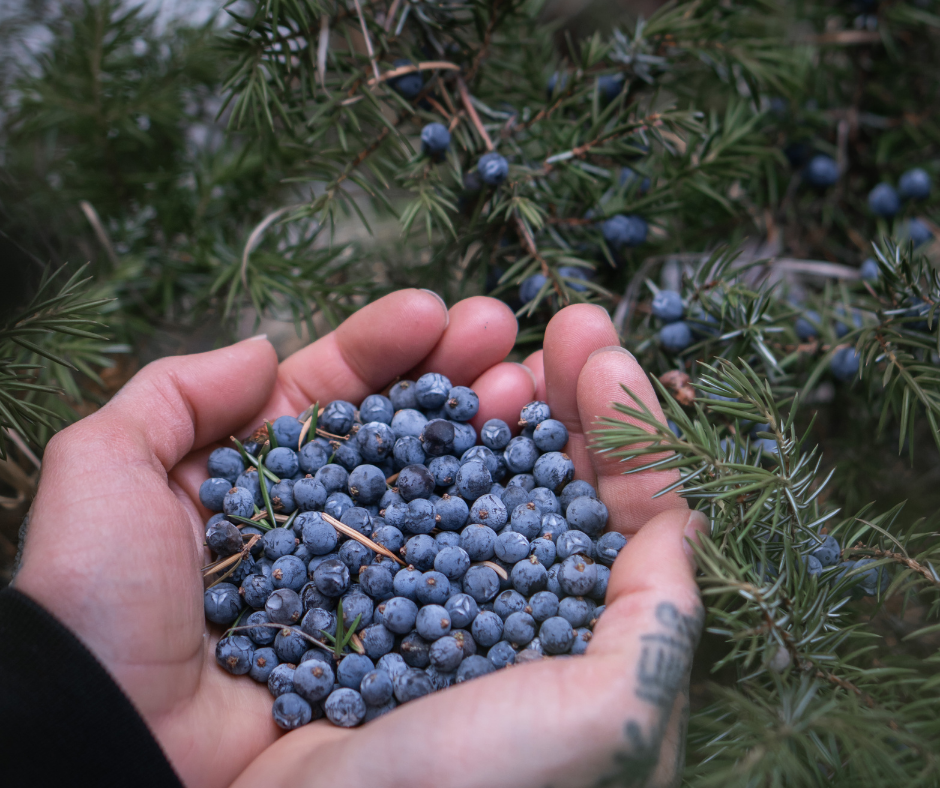Foraging for Food Around Your Home
go.ncsu.edu/readext?867461
en Español / em Português
El inglés es el idioma de control de esta página. En la medida en que haya algún conflicto entre la traducción al inglés y la traducción, el inglés prevalece.
Al hacer clic en el enlace de traducción se activa un servicio de traducción gratuito para convertir la página al español. Al igual que con cualquier traducción por Internet, la conversión no es sensible al contexto y puede que no traduzca el texto en su significado original. NC State Extension no garantiza la exactitud del texto traducido. Por favor, tenga en cuenta que algunas aplicaciones y/o servicios pueden no funcionar como se espera cuando se traducen.
Português
Inglês é o idioma de controle desta página. Na medida que haja algum conflito entre o texto original em Inglês e a tradução, o Inglês prevalece.
Ao clicar no link de tradução, um serviço gratuito de tradução será ativado para converter a página para o Português. Como em qualquer tradução pela internet, a conversão não é sensivel ao contexto e pode não ocorrer a tradução para o significado orginal. O serviço de Extensão da Carolina do Norte (NC State Extension) não garante a exatidão do texto traduzido. Por favor, observe que algumas funções ou serviços podem não funcionar como esperado após a tradução.
English
English is the controlling language of this page. To the extent there is any conflict between the English text and the translation, English controls.
Clicking on the translation link activates a free translation service to convert the page to Spanish. As with any Internet translation, the conversion is not context-sensitive and may not translate the text to its original meaning. NC State Extension does not guarantee the accuracy of the translated text. Please note that some applications and/or services may not function as expected when translated.
Collapse ▲ Many of us are starting our summer garden of produce, from carrots to zucchinis. There is much excitement within growing your own food in your outdoor space. But did you know that there are also opportunities to find food that’s naturally growing in your backyard? Foraging is an age-old tradition of sourcing food from many wild plants and idigenous plants and organisms that are safe for consumption. Many simple plants you may see around your front or backyard, like dandelions, honeysuckles and wild garlic, are great examples of plants that can be used in making delicious salads and meals. Before diving in your backyard or neighborhood for wonderful wild ingredients, it’s important to research how to forage in your region or work with professionals who can educate you on safe plants to eat and harvest sustainably. Everyone should remember that we’re sharing our wild foods with other animals. Check out this wonderful video on “Foraging for Backyard Edibles” from our friend Travis Birdsell at N.C. Cooperative Extension of Ashe County through NC State Extension Homegrown. Research, be safe, and happy foraging!
Many of us are starting our summer garden of produce, from carrots to zucchinis. There is much excitement within growing your own food in your outdoor space. But did you know that there are also opportunities to find food that’s naturally growing in your backyard? Foraging is an age-old tradition of sourcing food from many wild plants and idigenous plants and organisms that are safe for consumption. Many simple plants you may see around your front or backyard, like dandelions, honeysuckles and wild garlic, are great examples of plants that can be used in making delicious salads and meals. Before diving in your backyard or neighborhood for wonderful wild ingredients, it’s important to research how to forage in your region or work with professionals who can educate you on safe plants to eat and harvest sustainably. Everyone should remember that we’re sharing our wild foods with other animals. Check out this wonderful video on “Foraging for Backyard Edibles” from our friend Travis Birdsell at N.C. Cooperative Extension of Ashe County through NC State Extension Homegrown. Research, be safe, and happy foraging!




